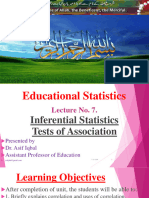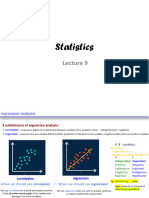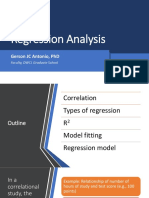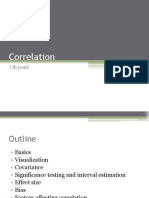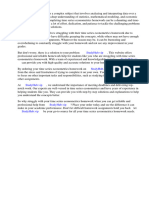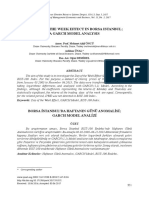0% found this document useful (0 votes)
15 views15 pagesCorelation and Regression
The document outlines the assumptions necessary for conducting correlation analysis, including linearity, continuous variables, normality, homoscedasticity, and the absence of significant outliers. It also describes different types of correlation, statistical methods, and the interpretation of p-values, as well as regression analysis techniques and their associated metrics. Key concepts such as R, R-squared, F-statistic, and the importance of residuals in regression analysis are also discussed.
Uploaded by
waheeda.anjumCopyright
© © All Rights Reserved
We take content rights seriously. If you suspect this is your content, claim it here.
Available Formats
Download as DOCX, PDF, TXT or read online on Scribd
0% found this document useful (0 votes)
15 views15 pagesCorelation and Regression
The document outlines the assumptions necessary for conducting correlation analysis, including linearity, continuous variables, normality, homoscedasticity, and the absence of significant outliers. It also describes different types of correlation, statistical methods, and the interpretation of p-values, as well as regression analysis techniques and their associated metrics. Key concepts such as R, R-squared, F-statistic, and the importance of residuals in regression analysis are also discussed.
Uploaded by
waheeda.anjumCopyright
© © All Rights Reserved
We take content rights seriously. If you suspect this is your content, claim it here.
Available Formats
Download as DOCX, PDF, TXT or read online on Scribd
/ 15



